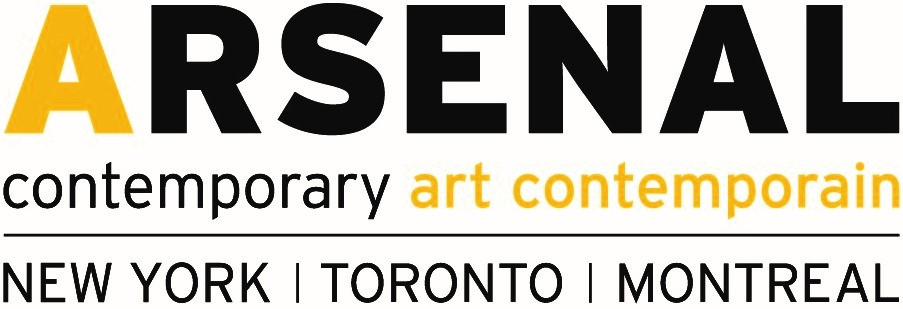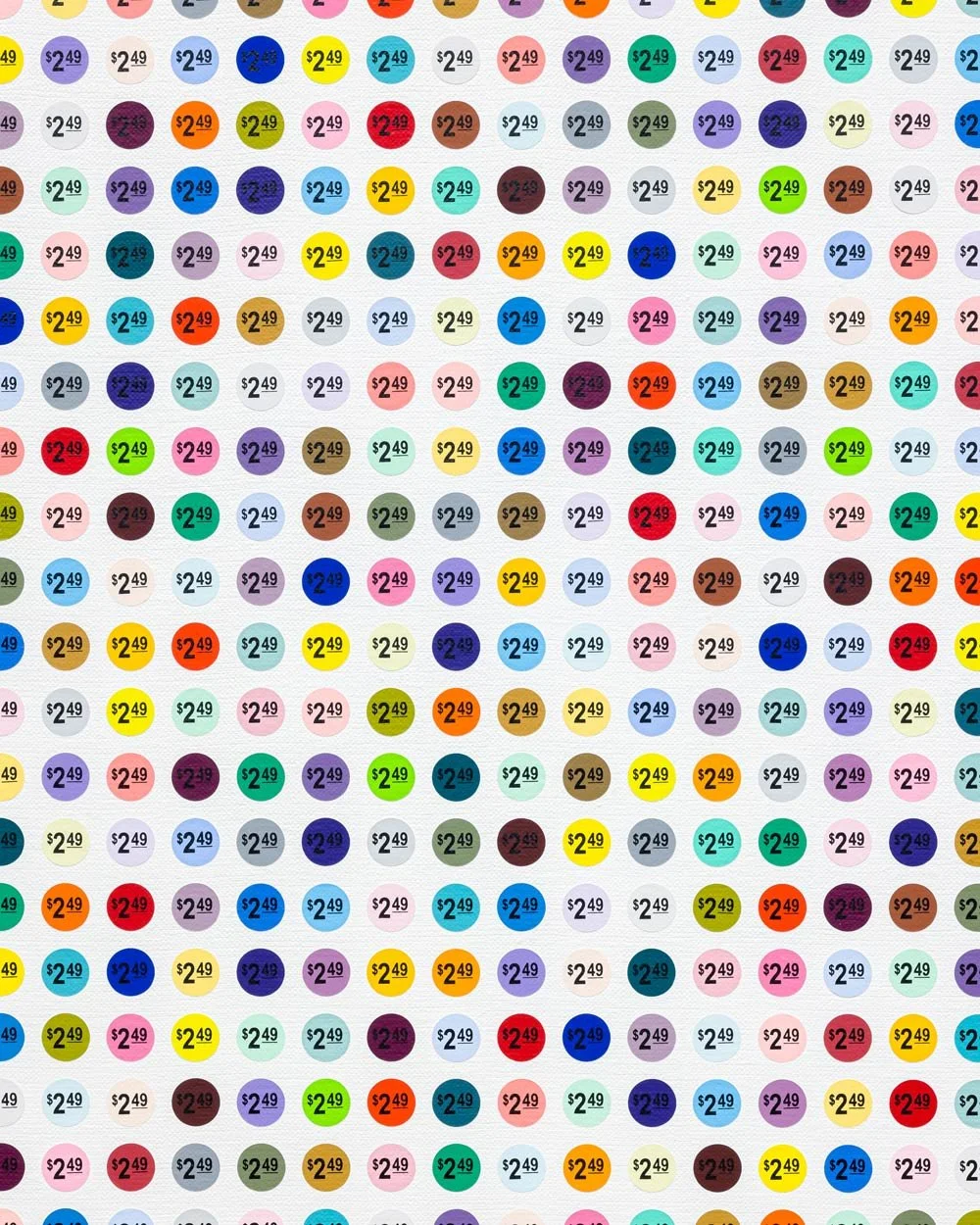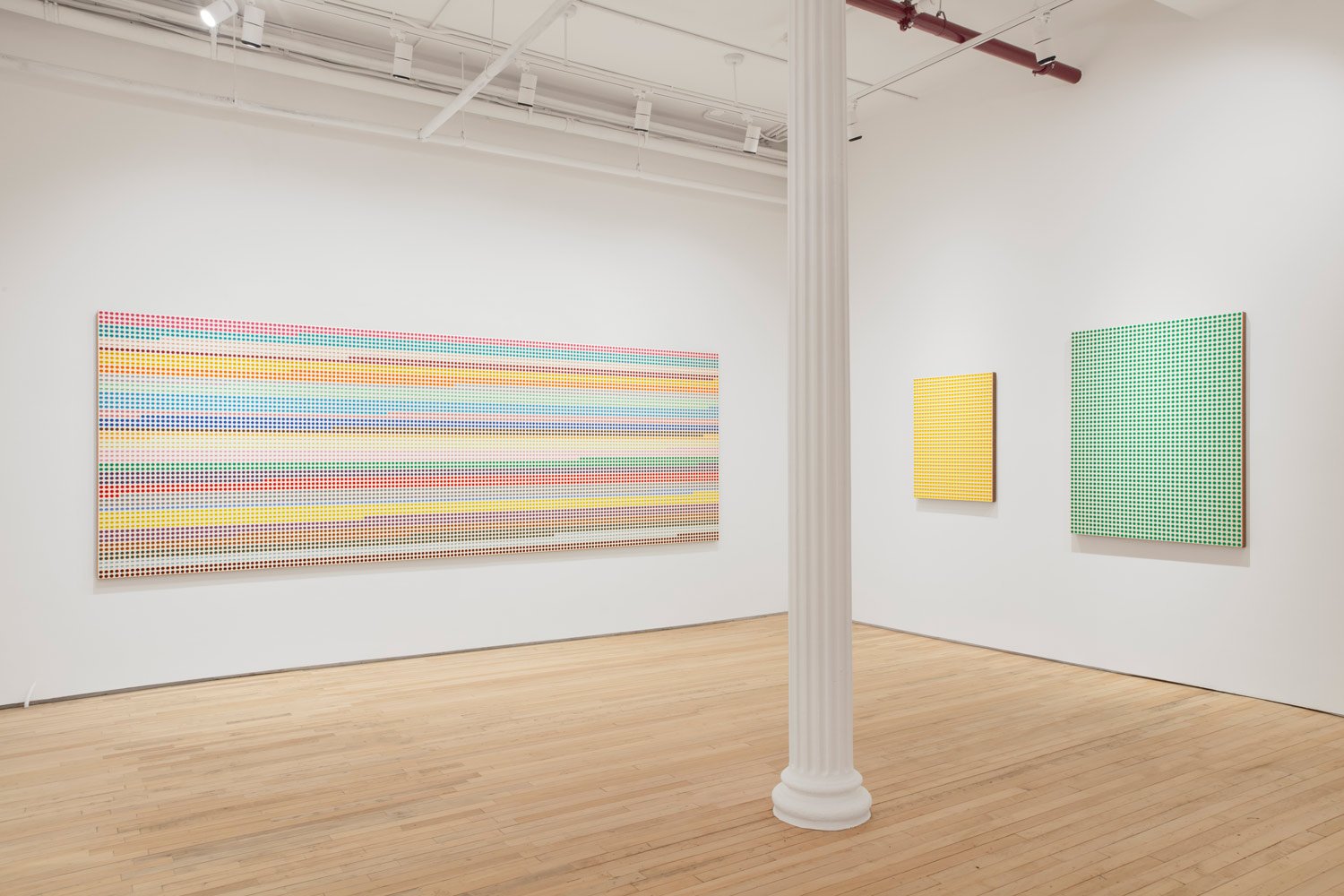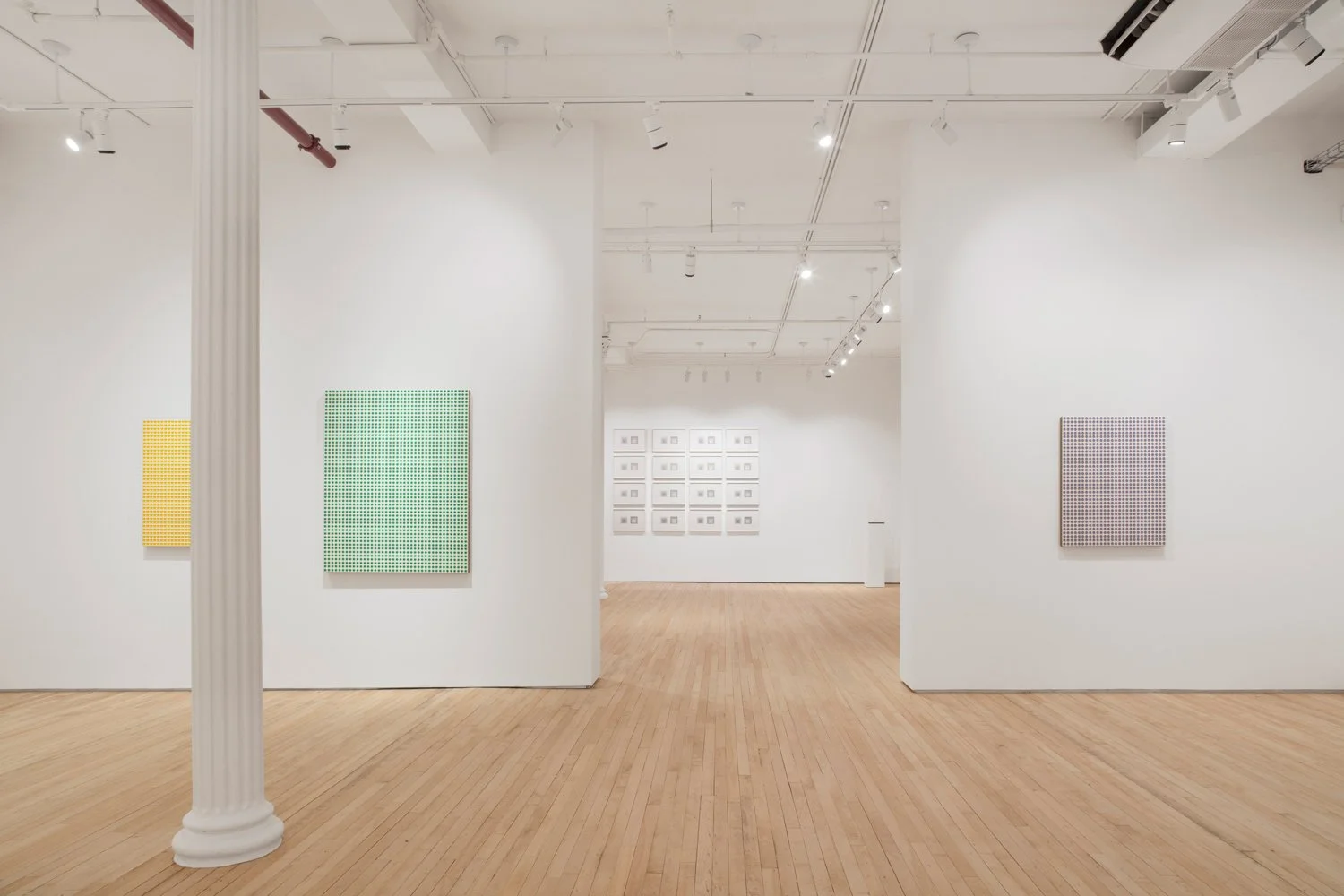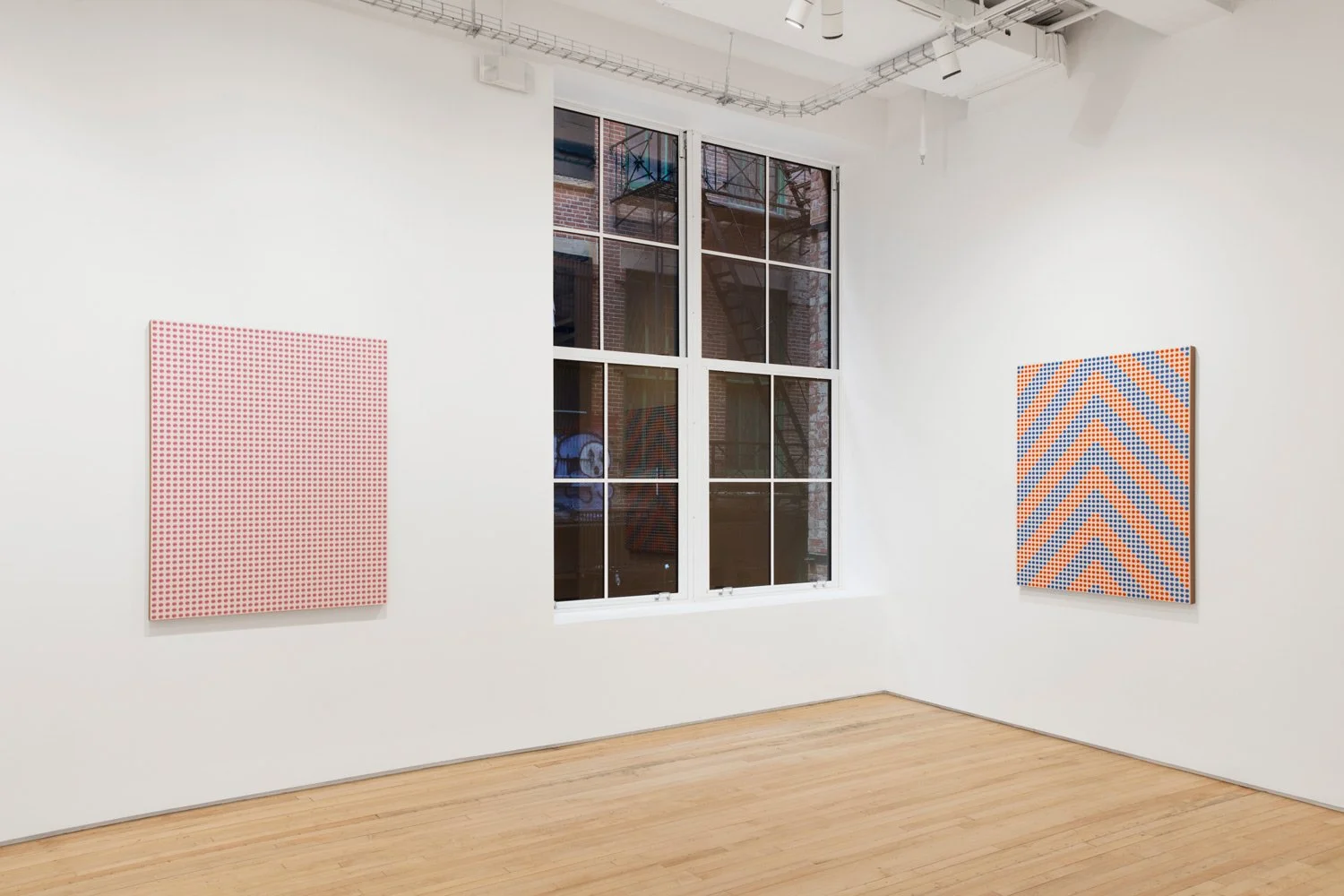MSRP
Sean Weisgerber
Jan 13 - Feb 25, 2023 at 21 Cortlandt Alley, New York, NY
Arsenal Contemporary Art New York is pleased to present MSRP, a solo exhibition of Toronto-based artist Sean Weisgerber. We are pleased to publish this exhibition text by Douglas Coupland on the artist’s new body of work.
It’s Not Art Until the Cheque Clears
Titled “MSRP,” the shorthand for “Manufacturer's Suggested Retail Price,” the works in Sean Weisgerber’s current Arsenal Contemporary NY exhibition fascinate from both afar and up close. At first glance the works appear to be simple everyday dollar store price stickers stuck onto large canvases — but then looking closer you realize they’ve actually been painted onto the canvas, and not painted slap-dashedly but painted with technical acumen that’s almost thrilling. With a bit of probing, it turns out that the price of the painting is the sum of the painted stickers he has depicted, and that the the piece will acquire its title once it is acquired, by adopting the date of purchase – e.g., APR. 22, 2022. The title codifies that precise moment in time something went from being an object to becoming an art object — an object that now has a new owner.
Okay. What, exactly, is ownership? Let’s say I have an apple. The apple is mine, but then I give it to you. Now that apple is yours. So, wait a second… what just happened here? Ownership indeed was transferred — and we all know what it’s like to own or not own something — but what is the numinous mechanism that creates and destroys ownership? Your new apple is in no way different from the apple I once owned except that a spell has been cast on it: the spell of ownership. There’s a reason why there’s a Nobel Prize in Economic Science.
Weisgerber’s works exist within that magical slot where art butts up against commerce in so many ways: hammer prices; nail-to-nail shipping costs; artist honorariums; auction catalogue price estimates; grants; gallery discounts to friends. It all crystalizes into these new works. They inhabit a territory pretty much colonized by artists of the twentieth century, yet there’s a freshness about Weisgerber’s work, a perfume that smells, if anything, like blockchain. There’s a sense that the work was created in an era in which authenticity is conferred in an ultraspecific manner at a very certain time, which is then final in perpetuity. It’s On Kawara meets Bitcoin.
Weisgerber has spent much of his adult life living in two of North America’s most expensive cities, Vancouver and Toronto. These are cities where real estate consistently sells for surreal prices and where spaces for many kinds of activities that are elsewhere taken for granted (studio space; foundry space; exhibition space) are largely unavailable regardless of the heaps of money being thrown at it. Works from MSRP reflect the bloodlessness of priced-by-the-square-inch capitalism in a manner that is wry, considered, and by no means a one-line joke. And looking further into the works, one determines color coding within the works reflecting the specific day on which ‘price stickers’ were added and thus the amount of time and labour that went into them. This calls into question the whole gallery system and its metrics of both value and price. Says Weisgerber, “Conceptually, this series stemmed from an interest in painting’s long, entangled relationship to the art market. Painting, as a medium, is often seen as the high commodity ‘cash cow’ of the visual arts. As a painter, I want to deconstruct and reflect on this entanglement, as a means to understand how these inherent market factors tacitly guide and distort our perception of paintings' intrinsic value.”
Weisgerber is also highly focused on what is known as the ‘Towa label,’ or ‘sticker,’ stickers that are easily found online at a website solely dedicated to selling price guns and accessories. These are cultural artefacts so all pervasive and ubiquitous as to be invisible, hiding in plain sight. One work in the MSRP show, Icon II, hybridizes the Towa’s form with the Malevich square and Ellsworth Kelly’s reductivism. It deliberately mirrors Weisgerber’s exact body height, creating a visceral connection to the artist’s body. This sounds like it’s an overly freighted compound of historic references, but the piece possesses a lightness and post-20th century cleanness that charms the viewer.
Altogether, a spell has been cast on Weisgerber’s works even before they sell, a spell in which an artist has injected the present into the past in a manner that is only forward thinking, and a manner that leaves a viewer wondering what comes next in his exploration of art, and its role inside the world’s only fully unregulated capitalist playpen.
